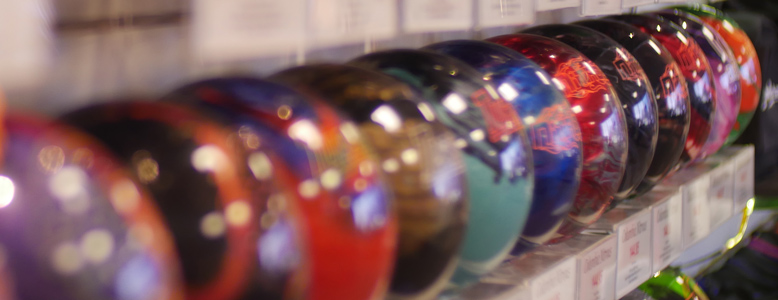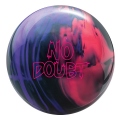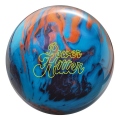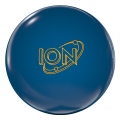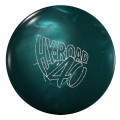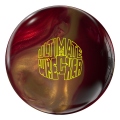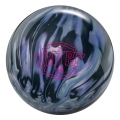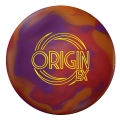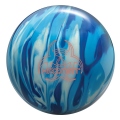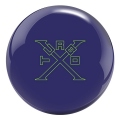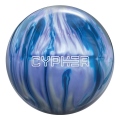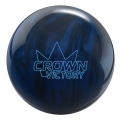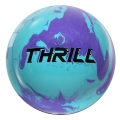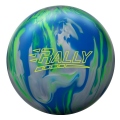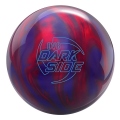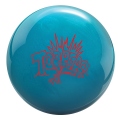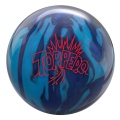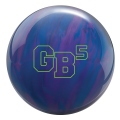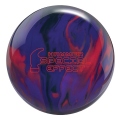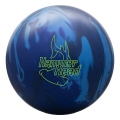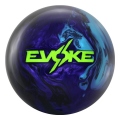For over 25 years, Bowling This Month has provided its readers with detailed and accurate bowling ball reviews of thousands of balls from most of bowling’s major manufacturers. This process started in 1995 when we were the first bowling publication to print lengthy, independent studies on how different bowling balls reacted on-lane. Our journey continues to this day as we constantly strive to help our readers make the most informed bowling ball purchasing decisions possible.
Our ball review process is 25+ years in the making
Our bowling ball review process has evolved over the years, as has ball technology itself. It has been our constant goal to provide as much information as possible to our readers so that they can make the most informed choices possible. All of the changes involved in this evolution have one thing in common: they were made with you, the reader, in mind. Readers themselves have suggested many of the changes. Others were made because it became apparent to us that our readers were being deprived of information that we were capable of providing. Some came about because a method or idea was agreed upon by most or all of the ball manufacturers, enabling us to be as consistent with our rating systems as possible.
How we test and review bowling balls
In 2002, through a general consensus of bowlers, manufacturers, and pro shops, we implemented our current ball testing process of using three different testers and four different oil patterns. Our three testers have delivery styles that cover the spectrum from stroker to tweener to cranker. Our standard testing oil patterns consist of dry, medium, and oily house shots and also include one more difficult and flatter sport condition. We feel that this testing methodology is more comprehensive and reliable than simply having one bowler testing balls on one or two oil patterns.
Our newest bowling ball reviews are featured below. To find older reviews, please use the At-a-Glance Comparison Table or search for them using the site search box.
Tired of Wasting Your Time with Misleading and Unhelpful Bowling Ball Reviews?
We drill and test hundreds of bowling balls per year to give our subscribers the best information available anywhere on the latest bowling balls to hit the market. Our reviews are unbiased, honest, and in-depth. That's why we've been the trusted partner of thousands of pro shops, coaches, and serious bowlers for over 25 years.
Join us as a premium member and get instant access to 1301 in-depth and unbiased bowling ball reviews, our on-lane performance ratings for each ball, and access to our popular bowling ball comparison tools.
"The biggest reason I started using Bowling This Month was due to their ball reviews. I needed something to help distinguish differences in balls within one manufacturer and across manufacturers. I've been a subscriber for many years now and along the way also discovered their articles could help my bowling techniques."
A detailed overview of our bowling ball testing process
We follow a standard testing procedure to ensure that our test results and ball reviews are consistent and accurate for all balls from one month to the next. We use standard oil patterns that are freshly applied using a state-of-the-art Kegel oiling machine, we have standard testers, and we use standard layouts on each test ball. Additional details about the testing process are provided below.
Testing environment
All ball testing is performed on Brunswick AnviLane synthetic lanes. The lanes are double-stripped and then freshly oiled using a state-of-the-art Kegel lane machine. Four Kegel oil patterns are used in our bowling ball reviews:
- Oily: Kegel High Street (44 feet in length)
- Medium: Kegel Main Street (41 feet in length)
- Dry: Kegel Easy Street (38 feet in length)
- Sport: Kegel Winding Road (39 feet in length)
Please visit Kegel’s pattern library website for more information on these and other Kegel oil patterns.
Each ball is thrown on at least three of the four oil patterns. The reason we don’t always test on all four patterns is that we will sometimes omit the testing on the pattern that a given ball was obviously not designed for. For example, we might skip testing a low-performance urethane ball on our oily pattern, as it would obviously perform very poorly for all bowlers since this isn’t the type of condition a low-performance urethane ball is best suited for.
We double-strip and then freshly oil for all testing.
Our bowling ball testers
Each ball is tested by the same three testers. Our testers all have different styles, and they are referred to in the reviews as Stroker, Tweener, and Cranker. Understanding which tester’s style is most similar to yours will allow you to get the most out of our reviews and help you make more informed choices when purchasing a ball. The three testers’ styles are summarized below.
Stroker’s style
Ball speed: 15.4 mph
Rev rate: 225 RPM
Axis rotation: 40 deg
Axis tilt: 20 deg
PAP: 3.875″ over, 0.625″ up
A stroker has a traditional style with adequate ball speed and a lower rev rate. Strokers frequently play farther outside on the lane than a higher rev player. Norm Duke and Mika Kouivuniemi are examples of strokers.
Tweener’s style
Ball speed: 17.8 mph
Rev rate: 320 RPM
Axis rotation: 65 deg
Axis tilt: 10 deg
PAP: 4.5″ over, 0″ up/down
A tweener is a player who is not quite a stroker and not quite a cranker. This type of player typically has a medium rev rate and good ball speed. Chris Barnes and Bill O’Neill are examples of tweeners.
Cranker’s style
Ball speed: 17.5 mph
Rev rate: 450 RPM
Axis rotation: 75 deg
Axis tilt: 15 deg
PAP: 4.5″ over, 1″ up
A cranker is generally considered to be a player with high speed and high rev rate. Crankers generally play deeper on the lane than a lower rev player. Bowlers like Sean Rash and Tommy Jones would fit this profile.
All of the bowler parameter values shown above were obtained at or near the release point. When comparing the testers’ styles to your own, please keep in mind that ball speeds displayed on automatic scoring systems are measured near the pins and are typically 2 to 3 mph lower than release ball speeds. This is because the ball slows down from friction as it travels down the lane.
Our standard drilling layouts
Each of the three testers has a standard layout that is used on each test ball. These layouts are summarized below.
Stroker’s layout
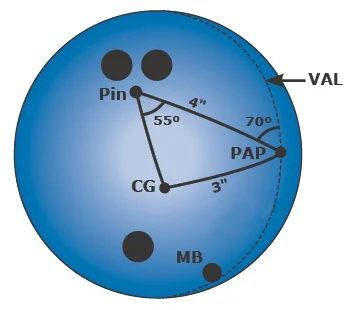
55 x 4″ x 70
Tweener’s layout
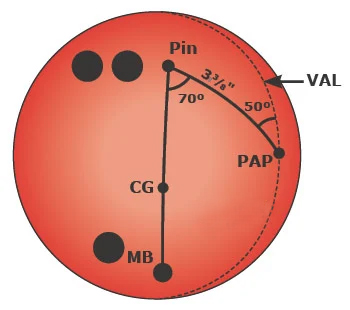
70 x 3 3/8″ x 50
Cranker’s layout
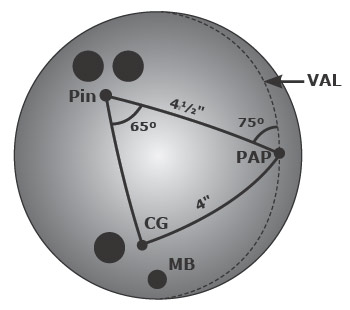
65 x 4 1/2″ x 75
The above images show the approximate locations of the pin, CG, and mass bias locators relative to each tester’s specific PAP. Please remember that these layouts might look different for you due to differences in PAP. Make sure that you always work with a qualified pro shop professional to layout your equipment with respect to your PAP.
Please note that prior to the USBC’s August 2020 balance hole ban, Stroker and Tweener used small balance holes on their vertical axis lines for the purpose of meeting the then-current USBC side weight imbalance requirements. Starting in August 2020, we stopped using the balance holes and noticed little to no difference in ball motion as a result.
Understanding our bowling ball reviews
If you are new to Bowling This Month, you might naturally have some questions about the various terms and ratings in our bowling ball reviews. If this sounds like you, you’re in the right place. In this section, we will walk through each of the elements of a Bowling This Month ball review, explaining the terminology as we go.
Bowler ratings table
Our bowling ball reviews begin with a summary table of the testers’ ratings on each of our four test patterns. An example tester ratings table is shown below.
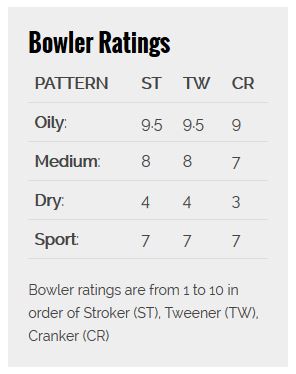
The Bowler Ratings table shows each tester’s ratings of the ball on our four test oil patterns. Ratings are from 1 to 10.
These ratings represent each tester’s general opinion of their ball reaction on our test patterns. If any of the oil patterns have ratings of “NA,” this means that we chose not to test the ball on that particular pattern. As mentioned above, we do this in situations where a ball is obviously not suited for a particular pattern.
General info table
Immediately after the tester ratings table is a table showing general information about the bowling ball. We split the general information into two sections: coverstock and core.
Coverstock specs
Name: This is simply the manufacturer-supplied name of the ball’s coverstock. If the coverstock doesn’t have a name, we’ll typically print “NA.”
Type: This is the high-level classification of the coverstock’s composition. The most common coverstock types are reactive solid, reactive pearl, reactive hybrid, particle, and urethane.
Box finish: The surface finish of the ball when it comes out of the box. While we do often alter the surface of the balls during testing, all of our ratings are based on balls thrown at the box finish.
Color: The color or color combination of the coverstock, as provided by the manufacturer.
Core specs
Name: The manufacturer-supplied name of the ball’s core. If a core doesn’t have a name, we’ll print “NA.”
Type: The high-level classification of the ball’s core geometry. All cores are broadly classified as either symmetrical or asymmetrical.
RG: RG stands for radius of gyration, and the value shown is always the ball’s minimum radius of gyration. RG is a measure of a ball’s resistance to changes in rotational speed. Technically, radius of gyration is equal to the square root of the ball’s mass moment of inertia divided by its mass. In practice, radius of gyration is measured experimentally using an RG swing, but it can also be calculated from a ball’s CAD model. RG is typically expressed in units of inches, and the current USBC limits for RG are 2.460″ and 2.800″.
To a bowler, a low RG ball will be easier to “rev up” and it will rev faster because more of its mass is distributed closer to the center of the ball. Medium RG balls are harder to spin, so most bowlers will see a slight “loping” action through the heads. High RG balls are the hardest to spin since more of their mass is located farther from the center of the ball. Therefore, bowlers will usually see longer loping and later revving action when throwing a high RG ball.
Total diff.: Total differential is the difference between the ball’s maximum and minimum RGs. Total differential is a strong indicator of a core’s overall strength and track flare potential. Flare is created as the ball migrates from its release axis. A large amount of flare can noticeably reduce the length potential of the ball. Larger flare is generally considered an asset for playing oilier lanes because the ball presents a fresh, dry surface on all successive revolutions. When the ball crosses from the oilier boards to the drier boards, the ball surface bonds with the drier lane to increase the coefficient of friction, which causes earlier hook and greater total hook. That is, earlier and greater hook when compared to a smaller flaring ball. Smaller flaring balls give the bowler better length and later hook.
The maximum allowable total differential per USBC rules is 0.060″.
Int. diff.: Intermediate differential is the difference between the ball’s maximum and intermediate RGs. Symmetrical balls have an intermediate differential of 0.000″. Intermediate differential is also an indicator of a core’s overall strength and track flare potential, but generally to a lesser extent than total differential.
Balls with higher intermediate differentials generally have more versatility in how they can be drilled for the bowler. This can be either good or bad, depending on the skill level of the ball driller.
RG, total differential, and intermediate differential are the three parameters that allow us to accurately classify the potential dynamic strength of a bowling ball’s core. The other factor that can influence the core’s dynamic strength is its actual geometric shape, which can have an effect on how significantly the ball’s mass properties change when they are drilled. Some balls are designed so that a skilled ball driller can dramatically change the as-drilled RGs and differentials using different layout techniques, while other balls are designed so that the undrilled mass properties are maintained as much as possible after the holes have been drilled. These are simply two opposite approaches to core design; one is not inherently better than the other.
Comments and testing notes
The main body of a BTM ball review is comprised of our testing notes for the ball. Generally speaking, we try to discuss the reactions seen by each tester on each of the test oil patterns, along with any subjective observations from the testers. We also discuss the various surface adjustments that were made to the test balls to achieve the best reaction on each pattern.
Performance ratings
Each ball is rated in four performance categories: torque, length, back end, and total hook. These ratings provide a unified “measuring stick” for comparing balls across all of the different manufacturers. For many years, these performance ratings have been based on our Tweener tester’s ball reaction on our medium oil pattern.
Torque (rated from 1 to 10): This refers to the smoothness or angularity of the ball from the breakpoint to the pins. A high torque ball will flip the most; a low torque ball will have the most even break. Players who generate more torque through their release generally like balls with less torque. Bowlers who are “roll” bowlers generally have more success with higher torque balls. Remember, this category does not measure the amount of hook, only the shape of it.
No matter what you talk about in bowling, you can’t discount the bowler’s release, the surface of the ball, or the condition on which the ball is rolling. Bowlers who release the ball with leverage will see more flip than bowlers who either miss the shot or just roll the ball off their hand. A shiny ball will generally be more flippy than a dull ball. An oily lane will create more flip than a dry lane. If your ball is hitting flat, you might want to change to something with a higher torque rating.
Here, Tweener, once lined up on the pocket, repeats strike shots over and over, and observations are only made on the angularity of the ball reaction. Nothing else matters here. Judgments are not made on the amount of hook or the result at the pins. Only the shape of the hook from the breakpoint to the pins is considered.
Length (rated from 1 to 25): Years ago, we rated balls in the length section according to how long they went after leaving the oil and contacting dry. Prior to that, technology was such that it was thought that all balls skidded in oil. However, due to the rapidly advancing aggressiveness of today’s coverstocks, this assumption is no longer true. All balls do not skid in oil; at least, they don’t all skid on playable quantities of oil. Some balls now will stop skidding and actually hook in quantities of oil that were previously impenetrable. That said, we wanted a lane condition that would show a wide range of separation between the longest balls and the shortest balls and would show varying amounts of ball skid in between.
For the length testing, we put down two loads of lane dressing from 0-10 feet. We buff to 38 feet on a completely dry lane and apply no oil on the return trip. This pattern gives us 48 feet of skid with a plastic ball and 23 feet of skid with our most aggressive particle ball. That 25 feet of separation is what we base our length ratings on. Remember, the numerical rating will measure the amount of skid on our “special” lane pattern only. Obviously, you would get much longer skid figures if you tested a ball on your league or tournament shot. But, this way, we can compare balls to each other in a more objective, technical way than previously. Other characteristics or observations about length might be mentioned within the text part of the length rating section.
Back end (rated from 1 to 20): Back end is the amount of hook from the breakpoint to the pocket. This does not reflect the sharpness or smoothness of the hook (which is torque potential). So, a flippy ball that breaks later and an even-rolling ball that breaks earlier could have a similar back end rating, even though their angles to the pocket and carry potential may differ. Back end only evaluates the ball’s performance based on the number of boards that it crosses relative to the other balls tested. Basically, it measures the number of boards from the breakpoint to the pins. Back end is observational, and testing is done in a commercial center, not in a completely controlled environment. Therefore, there is a margin of error. Like with length, this error should not be great, but it does exist.
Also, as with length, the bowler’s style, level of ability, lane condition, ball surface, and other factors contribute to the actual back end that each bowler sees. These variables may cause balls to be different for different individuals.
Total hook (rated from 1 to 100): This is probably the least relevant part of our bowling ball ratings. Unless you are on either end of the power spectrum, this rarely contributes anything useful. Straighter players may prefer the extra movement of a bigger hooking ball since this will give them more area to play. Larger hook players may have more success with a ball that covers fewer boards, since this will let them reduce the number of boards crossed and reduce the ball burning up in the front of the lane.
Summary info
At the bottom of our reviews, we present a brief summary of information for the reader who can’t wait to get to the pro shop and buy the ball.
Strengths: A general summary of which particular positive characteristics evidenced themselves during the tests.
Weaknesses: A general summary of which ball characteristics might give some bowlers problems. Some ball characteristics may only affect particular styles, and this is strictly subjective, of course. They would be noted here.
Overall Summary: Again, this section would include a subjective synopsis of the testers’ general impressions after the ball testing is completed and a subjective synopsis of any differences between the bowlers.
Our overall philosophy
We try to give each and every ball a chance to shine, but if we can’t get a good reaction, we feel duty-bound to report that to you. Conversely, if we get an outstanding reaction, we are obligated to let you in on our enthusiasm. We try to keep the ball reviews light and fun as well as informative.
It is important to remember, however, that no matter how favorable or unfavorable the review is, it is still a subjective opinion. Balls that we give an overall good review to may remind you of a boat anchor. Balls that we pan may result in records and award scores for you. We can assure you that they are done as fairly, as consistently, as objectively, and as honestly as is possible by human hands.
Editor’s note: Some portions of this article were taken from former Bowling This Month editor Jim King’s excellent Crash Course in Ball Talk article, published in our May 2009 issue. Special thanks to Jim for writing such a well-thought-out and practical guide to interpreting our bowling ball reviews.

